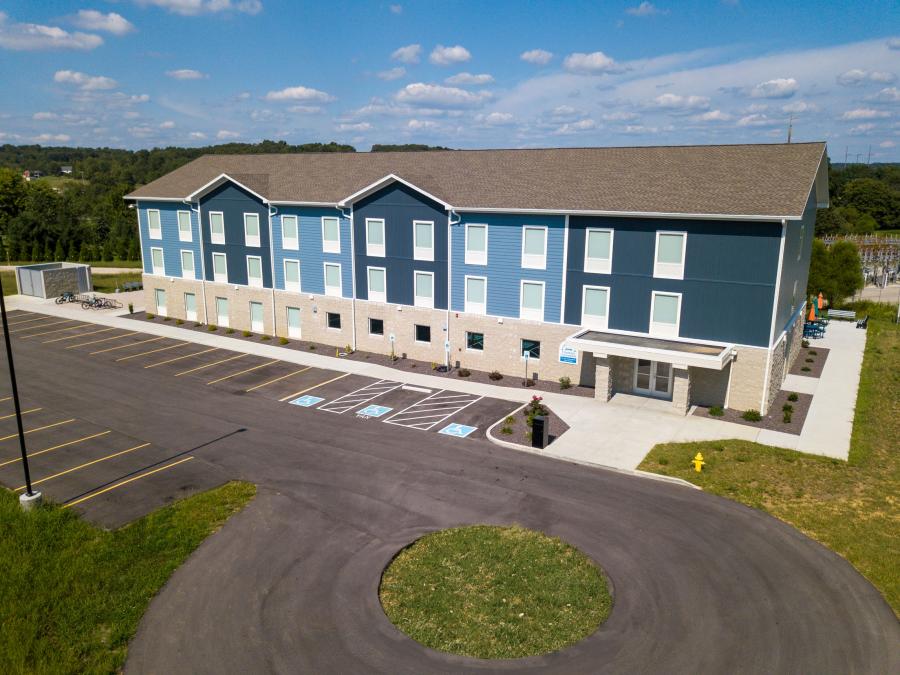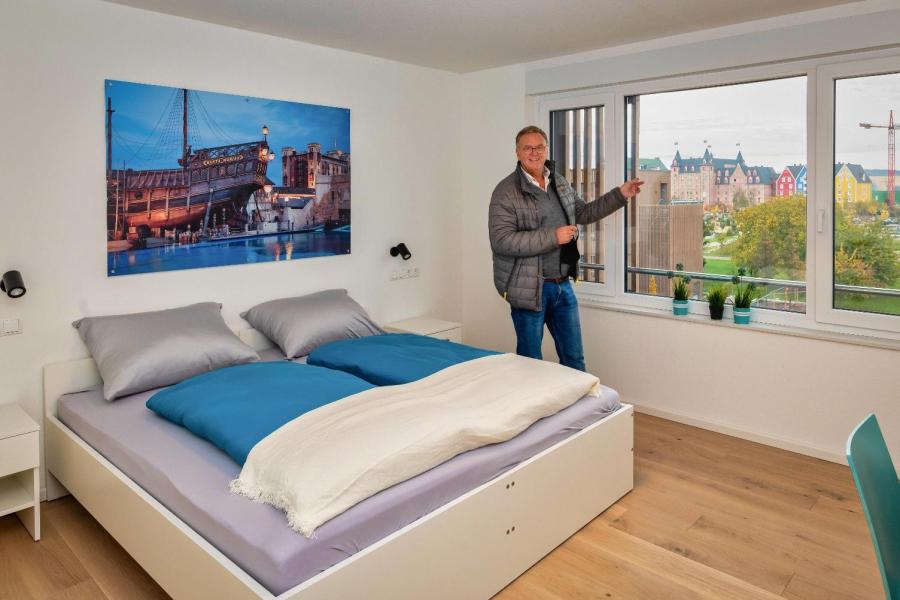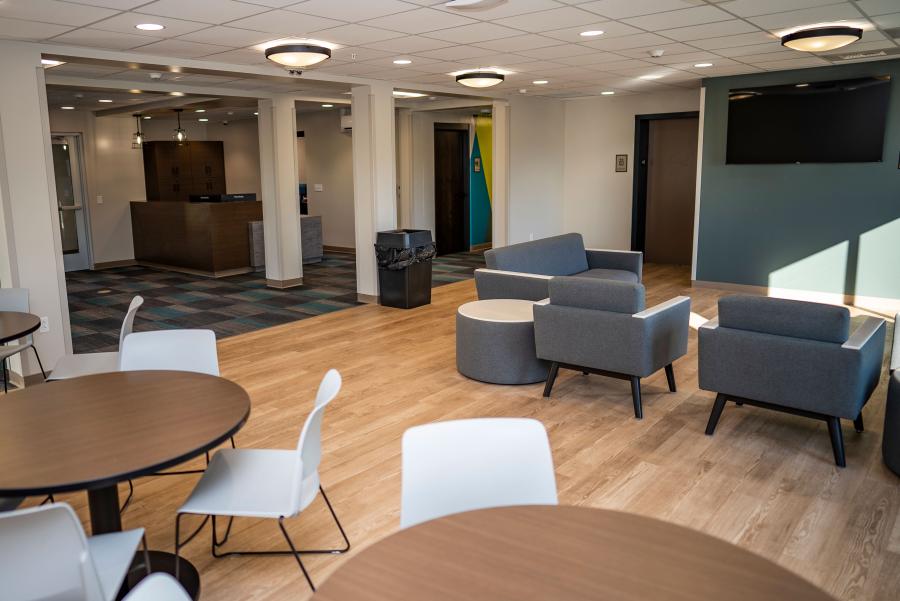Asking seasonal associates to “stay awhile” can be easier when they feel at home.
Properly staffing amusement and theme parks continues to pose a significant challenge, exacerbated by the disruptive impact of the COVID-19 pandemic. Despite this obstacle, an effective strategy for retaining employees through on-site housing has allowed several operators to keep dedicated associates.
Funworld spoke with four seasoned attractions operators, exploring how each developed on-site employee housing at their respective attractions. These experienced professionals share the nuances of the housing development process, the establishment of quality and pricing standards, and share key insights for amusement and theme parks seeking to implement their own employee housing solutions.
The First Steps
“The best thing we did before building [our employee housing] was visit and talk with other park officials who already had employee housing,” says Leah Koch-Blumhardt, director of communications for Holiday World & Splashin’ Safari in Santa Claus, Indiana. “They gave us good ideas, like considering gender when building restrooms and including ample storage.”
Parks in the United States intending to house international workers should not skimp on the kitchens, she says. International team members prefer to cook more than domestic employees do. When members all leave work at the same time, the kitchen gets slammed, Koch-Blumhardt explains. When looking to move forward with the build, hire a good manager to oversee the project, she recommends.
Eugene Naughton, president of The Dollywood Company in Pigeon Forge, Tennessee, suggests balancing the size of the residence, where to locate it, and how to fund the development.
“Plan with the future size of your organization in mind, not the current number of employees,” says Naughton. Don’t forget the government’s hand in development—its involvement may impact licensing, zoning restrictions, and environmental regulations from the city, county, state, and country, he recommends. Experts believe it is important to interrogate the “why” behind offering employee housing.
Put Staff First
Everyone consulted for this Funworld story built employee residences to amp up their staffing. In 2012, Europa-Park in Rust, Germany, had a shortage of employees.
“We built a residential building right behind the boundaries of Europa-Park then in the style of an old tobacco shed,” explains Ann-Kathrin Mack, architect and partner at the park. “To honor the region.”
While staff housing has always been important, she believe the issue has become more pressing in recent years. Naughton saw the need and continues to respond to it. He plans to complete another 350 units by March of 2024. Dollywood will then have accommodations for 1,100 employees.
Set Requirements
“Nearly every employee would opt for receive housing, if we didn’t implement a prerequisite system,” says Benedict Kaltenecker, senior public relations and social media manager at Legoland Deutschland in Günzburg, Germany.
Distribution of the units is made on a point system, he says. Typically, employees must live between 100 km and 150 km away. The tenants pay a discounted rate for an apartment and the price is adjusted annually according to the official rental index.
At Holiday World’s Compass Commons, residents must be at least 18 years old and prove that they live 50 miles or more from the park, says Koch-Blumhardt. “We charge them a weekly rate, which is automatically deducted from their paychecks,” she says.
At Dollywood, workers pay $125 a week for their units which have their own kitchens, internet, and laundry. A tram takes them to the park for work and returns them home when their shift is over.
Europa-Park charges at cost for housing because they do not intend to profit from the offering.
The Benefit for Operators
Besides a rental equipped with modern furnishings, a kitchen, and underground parking—Europa-Park also added a courtyard and other shared spaces. This encourages a social environment, says Mack.
“Many of our team members come from far away and we want it to be as easy as possible for them to settle in and feel welcome,” she says. “This makes it easier to meet people and make friends.”
New team members are offered an easy move, and they can settle in quickly, without the need to hunt for a flat in a place they don’t know very well. That reassures them, Mack says.
“The advantages of having the residences at Dollywood solve an operational problem,” says Naughton. The park can deliver a day of excellence to guests consistently this way, because the Tennessee park is equipped to care for their employees and meet the increasing demand for entertainment in the region. Tennessee is one of the fastest growing states for tourism, where the unemployment rate recently ranked below 3%.
Naughton says that multiple cultures live under the same roof and sometimes other residents wonder why they do certain things. These international employees then hosted a meal relevant to their culture for their fellow dorm residents. During the meal, the hosts explained the customs from their homeland. At Dollywood, if a team member works in costume, wardrobe is located at the dorm.
For Holiday World, the addition of Compass Commons provided a positive impact. “Previously we ran our wooden roller coasters with three ride operators,” Koch-Blumhardt says. “This year we were able to run them with five or six on busy days. As a result, our ‘rides per guest’ increased significantly in a year when attendance was up 10%.”
All of the park officials—at Dollywood, Holiday World, Legoland Deutschland, or Europa-Park—believe building employee housing is an investment into their operation.
“Don’t wait,” says Koch-Blumhardt. “We wish we’d invested in this years ago.”
She adds on-site is a direct reflection of how seriously a property takes the guest experience, she says.




